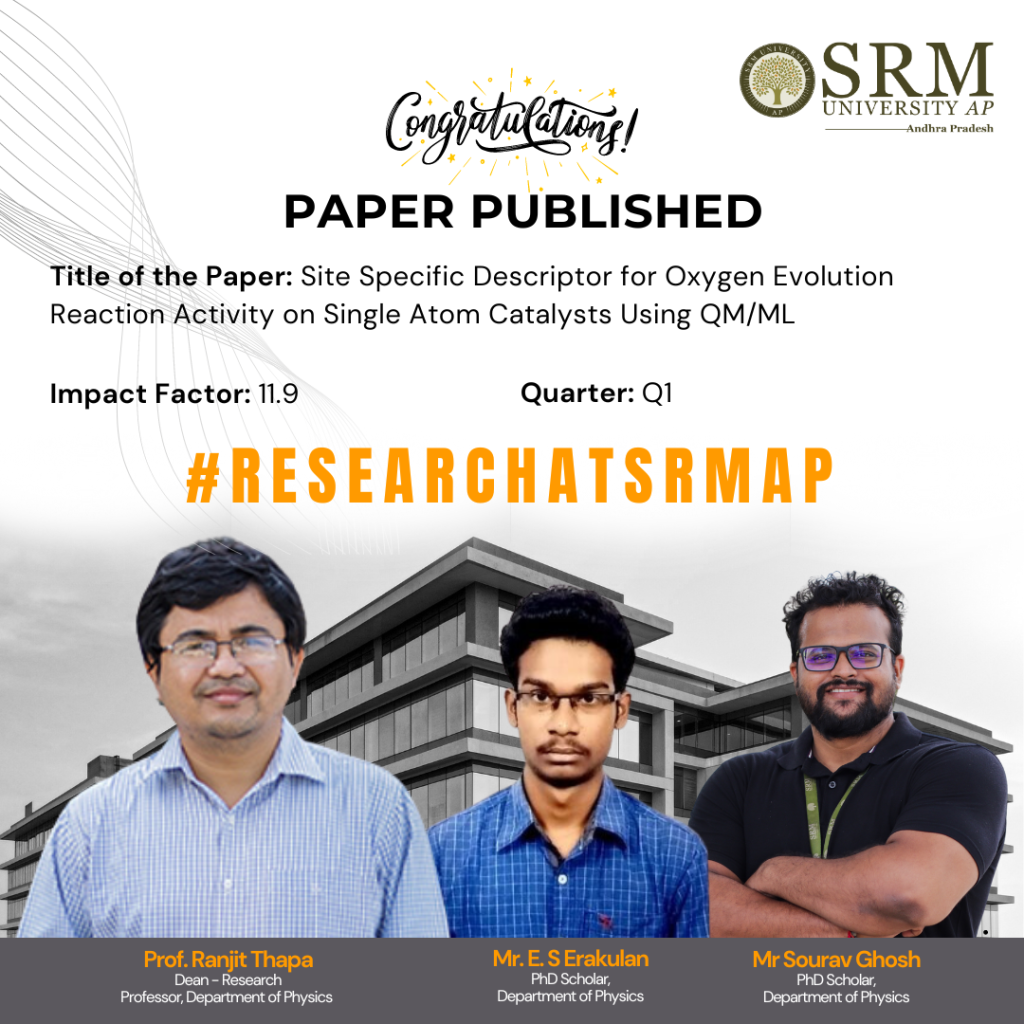
Prof. Ranjith Thapa in collaboration with two of his research scholars, Mr E. S. Erakulan Mr Sourav Ghosh and has come up with a groundbreaking research that has resulted in the publication of a scholarly paper titled, Specific Descriptor for Oxygen Evolution Reaction Activity on Single Atom Catalysts Using QM/ML.
Abstract of the paper
Descriptors are properties or parameters of a material that is used to explain any catalytic activity both computationally and experimentally. Such descriptors aid in designing the material’s property to obtain efficient catalyst. For transition metals, d-band center is a well-known descriptor that shows Sabatier type relation for several catalytic reactions. However, it fails to explain the activity when considering same metal active site with varying local environment. To address this, density functional theory was used for single atom catalysts (SACs) embedded on armchair and zigzag graphene nanoribbons (AGNR and ZGNR). By varying the anchoring nitrogen atoms’ orientation and considering pristine and doped cases, 432 active sites were used to test the oxygen evolution reaction (OER) activity. It was observed that S and SO2 dopant helps in reducing the overpotential on Co-SAC (h = 0.28 V). Along with the d-band center, a total of 105 possible descriptors were individually tested and failed to correlate with OER activity. Further, PCA was employed to narrow down unique descriptors and machine learning algorithms (MLR, RR, SVR, RFR, BRR, LASSO, KNR and XGR) were trained on the two obtained descriptors. Among the models, SVR and RFR model showed highest performance with R2 = 0.89 and 0.88 on test data. This work shows the necessity of a multi-descriptor approach to explain OER catalytic activity on SAC and the approach would help in identifying similar descriptors for other catalytic reactions as well.
Social Implications:
Computational studies have proven to be a vital tool to predict new materials and also assess the behaviour towards various catalytic reactions. They also identify the innate properties of the material which drives the catalytic activity. It helps in designing the material with required property to improve the catalytic activity. Descriptors are such computationally obtained properties/parameters of a material that has a meaningful relation with any catalytic property of a chemical reaction. d-band center, given by Hammer and Norskov in 1995, explained the binding strength of oxygen atom on pure transition metals. The d-band center shows Sabatier type relation with chemical activity and has been widely used to explain the catalytic activity of several reactions since its formulation. The adsorbate state after interaction with delocalized s-states of the metal atom is almost constant while that resulting from d-states interaction, is split into bonding and antibonding states. Hence the s-states were not considered. It is well known that, when the dimensions of a system are lowered the states become narrow and localized. In such systems, the d-band center does not explain the catalytic activity well and it is an open research problem.
Future Projects:
Density functional theory with machine learning approach could further be used and improved on similar SACs from which a predictive model equation could be constructed. Also, the proposed models are open to exploration on other catalytic reactions as well.
The authors thank SRM University-AP and National Super Computing mission for providing the computational facility.

